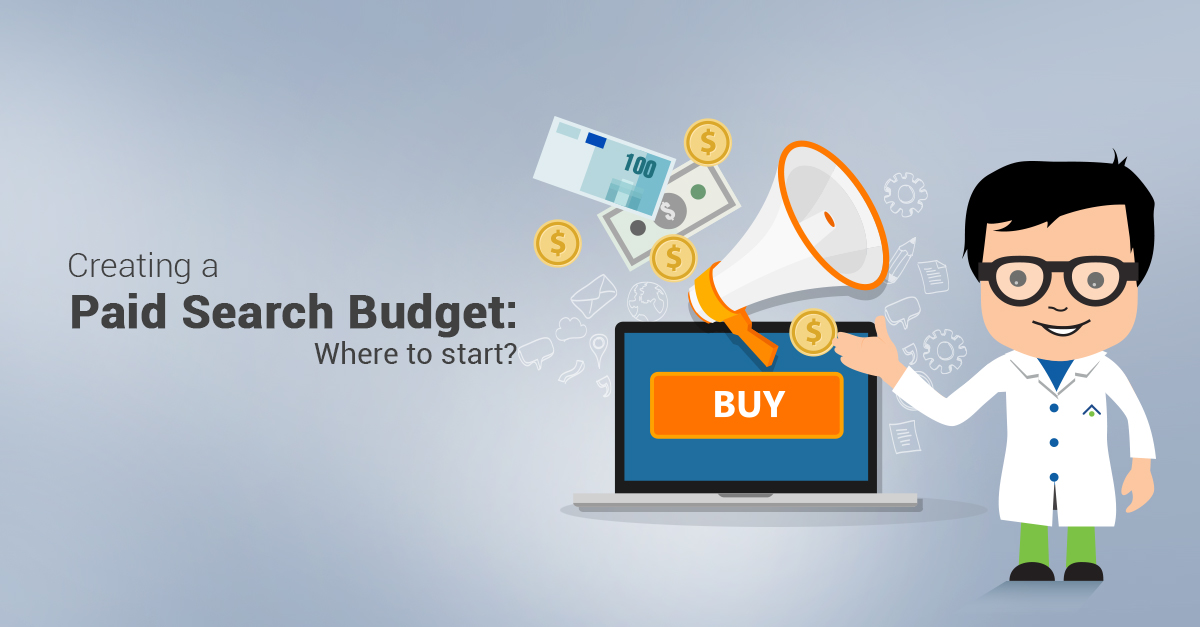Working in the TechWyse Solutions department means we come across a wide variety of businesses and prospects. The main objective for most of them is to generate new leads. Often, the client wants to generate leads as soon as possible, but since SEO is a slower climb to the top we need to spend on Google AdWords in the early goings to generate lead volume.
Typically, the recommended budget will take the following into consideration:
- Industry
Different industries will compete on different keywords. For example, a plastic surgeon may bid on the term ‘breast augmentation’, meanwhile a locksmith may bid on the term, “car door locksmith”.
A successful conversion for a plastic surgeon may mean $7,500
A successful conversion for the locksmith may mean $750
Due to the fact that the surgeon has more revenue to gain than the locksmith by converting a single click into a single customer, the surgeon is likely to pay more for that one click because other surgeons are competing for those clicks. Therefore, in that industry the keywords that surgeons would bid on will cost quite a bit more.

Of course, the number of competitors and potential customers will also make an impact!
Another consideration that hinges upon the nature of the business is the expected urgency of the decision which influences the conversion rate. For example, if a plumber ascertains a click, it’s because someone likely has an immediate issue to resolve and the visitor is more likely to take action. Conversely, if a general contractor receives a click, the visitor probably isn’t in the same rush for service and is more likely to consider options before taking an action.
Thus, the industry must be considered when thinking about starting budgets because it impacts the approximate cost of the click and the rate at which clicks turn into leads.
- Geographic Targeting
When targeting highly populated areas, it is a safe assumption that the number of potential customers influences the amount of competing businesses vying for position in the auction within the paid search platform.
For this reason, there is a higher cost per click in the most populous areas, while there is reduced cost per click in areas that are less populous.
This doesn’t mean that there won’t be some within the auction that bid evenly across areas of varying competition, but generally most advertisers are smart enough to segment their campaigns based on this consideration.
Once enough keyword research has been done while considering the demographics, an initial paid search budget can be set one of two ways:
Lowest Cost per Lead Focussed Approach
For prospects that are not opportunity starved, I have always advised that the cost per lead is the most important data piece to consider. The goal is to pay the lowest amount for the most targeted keywords and work towards the lowest cost per lead. Once this number is in hand, the prospect can then decide if this cost per lead is a profitable means of client acquisition. If it is not, we need to either work harder to drive the cost per lead down, or stop paid spend.
Yes, stop paid spend. It sounds silly, but sometimes either the conversion asset is under-performing, or in some markets, larger budgets are spending too much while their ROI goes unexamined and it sets the price too high within their auction.
Indeed, there are many businesses that spend on paid platforms that do not track their performance.
That said…
If this position makes sense for you to take, then I would recommend a magic number of 500 clicks. Budget for 500 clicks.
500 clicks is a reasonable sample of data by which you can understand your cost per click, your conversion rate, and your cost per conversion.
If after running your starting budget your cost per lead is acceptable, raise your budget in proportion to the impression share you are not taking advantage of with your current configuration.

Image Source
Of course, if you need more leads you may have to expand your net by bidding on other terms and/or in other territory. This is why on-going management is so important (Don’t forget your negative keywords).
The Lead Driven Approach
Prospects that express their desire to generate a substantial amount of leads quickly will need to start spending more.
Ultimately the amount of leads will be dictated by
- Keyword Selection
- Search Volume
- Cost Per Click
- Conversion Rate
This is why being mindful of competition and the industry’s cost per click, while setting a reasonable estimate for conversion will give us an idea as to what we might expect.
For example if prospect X wants to make 10 new sales per month and we estimate that:
- Every 3 leads will result in one new sale
- The website/landing page/conversion asset will convert at 10%
- The average cost per click is $5
Then we know:
- 10 sales are generated by 30 leads
- 30 leads are generated by 300 visitors
- 300 visitors will cost $1,500
Therefore, each sale will cost $150 in ad spend to generate.
Hopefully this helps you determine your starting position!
Please email mlandry@techwyse.com if you have any questions.







on
Thank you for this information. This is all fairly new to me and this really cleared up just how to approach things initially as well as the importance of ongoing management. Excuse my ignorance, but what are ‘negative’ key words?
Thanks again!